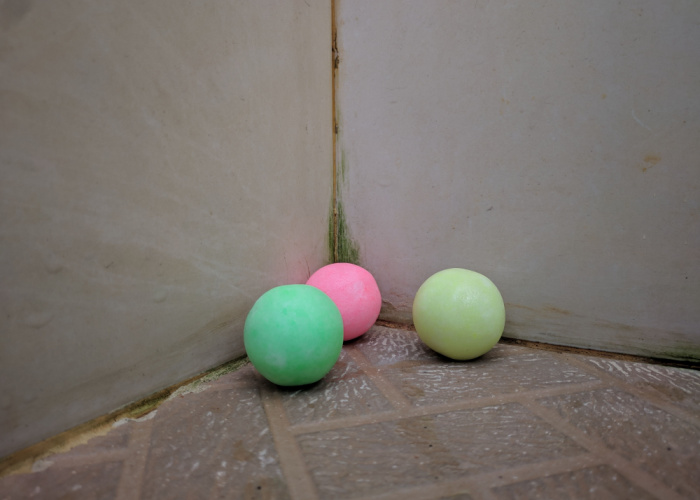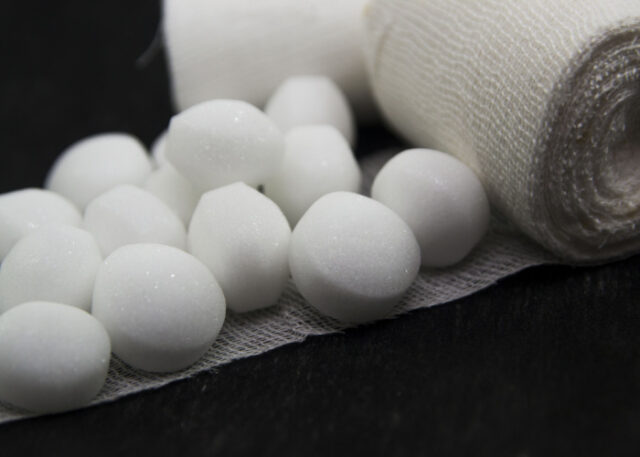
Table of Contents
- What are Mothballs and How are They Used?
- Why are Mothballs Toxic to Dogs?
- How Many Mothballs Could Be Toxic to A Dog?
- What are the Clinical Signs and Symptoms of Mothball Poisoning?
- Can Mothballs Kill Dogs?
- What Should I Do If My Dog Ate a Mothball?
- How is Mothball Poisoning in Dogs Treated?
- Why Did My Dog Eat Mothball?
- How Can I Prevent Mothball Poisoning?
- Yes, Mothballs are Toxic to Dogs…
Cloth-eating pests are irritating and devasting to deal with.
And it’s not just clothes hoarders who have this kind of problem.
Many homeowners and families are in complete distress with warding these fabric-eating pests off their clothes.
Their go-to solution? Mothballs.
These small balls pack some potency against pests like cloth moths, silverfish, and even termites.
But along with its effectiveness in dealing with cloth pests is its potential harm to other creatures.
Who knows if we are unknowingly harming our dogs just by using it?
And what happens when our dog ingests one? Are they in trouble?
There are many question marks on the impact of mothballs on our dog's health.
And If you’re a dog owner like me, I bet you’re also concerned with the mothballs’ effect on dogs.
So, let’s talk about that!
In this blog article, we’ll answer the question, “Are mothballs toxic to dogs?”
Let’s dive deeper into what makes mothballs toxic, the symptoms they can bring to your dog, and what to do when your dog ingests one.
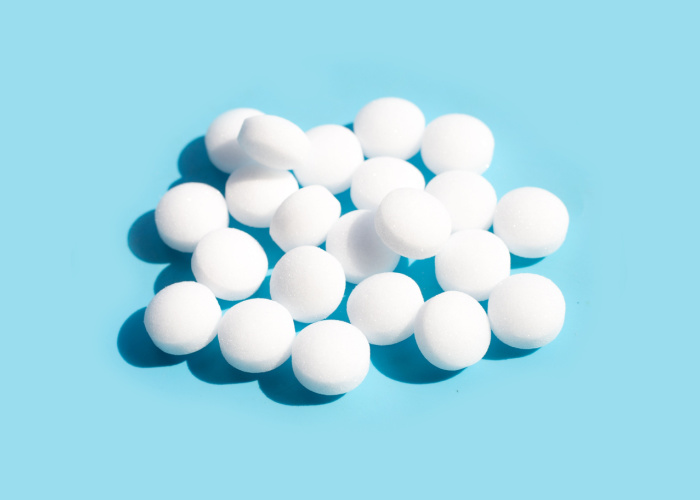
What are Mothballs and How are They Used?
Before we answer the question, “Are mothballs toxic to dogs,” let’s first explain what they are and their use.
Mothballs are repellants of cloth moths and other pests that feed on your beloved fabrics.
They usually come in a solid form shaped like a flattened sphere.
If you haven’t seen one yet, mothballs look like Mentos chewy or large medicinal tablet pills that you can easily choke on.
But their taste is nowhere near your favorite mint gum. I strongly recommend not tasting mothballs just to find out!
Another thing is that mothballs don’t just act as a repellant; they are also pesticides.
Mothballs ward off pests and kill them when under prolonged exposure.
They are usually volatile, continuously releasing their pesticide vapors until they run out.
So, even if mothballs come in solid form, they don’t stay in this form for too long. Slowly, they vaporize into gas substances when exposed to air.
That’s why they’re better off being used in sealed containers, cabinets, and wardrobes.
Using it in an open space like your living room dilutes the concentration, making it less effective in killing the intended pests.
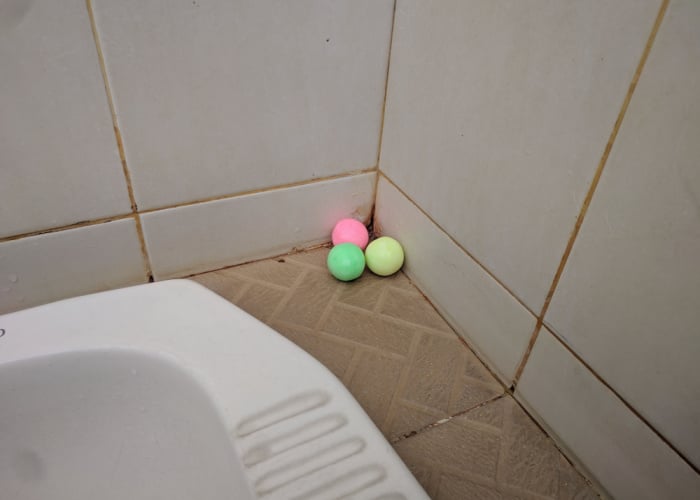
Why are Mothballs Toxic to Dogs?
Mothballs are pesticides; they contain toxic substances.
And the thing about mothballs is when they're used incautiously, they can harm creatures other than their intended targets.
If you’re not careful handling this pesticide, your dog can suffer from mothball toxicity.
Mothball toxicity or mothball poisoning in dogs is when your pet dog ingests mothballs. It could also mean prolonged exposure to the toxic fumes of the product.
Generally, the mothballs sold here in the US contain any of these three types of insecticides:
- Naphthalene
- Paradichlorobenzene (PDB)
- Camphor
All these three active ingredients in mothballs harm your Fido in many ways.
Naphthalene
Among the three active pesticide ingredients, naphthalene is the most toxic.
Naphthalene is the oldest ingredient used in mothballs.
Even in small amounts, it can easily cause discomfort and alarming symptoms for your dog. We'll discuss its clinical symptoms in a while.
In high doses, naphthalene is reported to cause chronic anemia, multiple organ failure, and permanent damage to your dog’s nervous system.
And if that’s not enough, naphthalene is also a carcinogen for humans and dogs.
Paradichlorobenzene (PDB)
Nowadays, the more common ingredient for mothballs is Paradichlorobenzene.
Paradichlorobenzene is a volatile organic compound that’s less toxic than naphthalene.
But don’t take this poison lightly!
Although this substance is less potent than its predecessor, it can cause almost the same symptoms that naphthalene does to your dog.
And if Fido ingests it in large amounts, it could cause gastrointestinal issues, organ damage, and even tissue decay.
Camphor
Mothballs can also contain camphor, although less common than the previous two ingredients.
But, unlike naphthalene and PDB, camphor is an essential oil.
This means camphor has some medicinal benefits for humans at small dosages.
In large dosages, however, camphor is mildly toxic to both humans and dogs.
Camphor brings discomfort to your dog through inflammation, allergic responses, and skin irritation.
This essential oil can cause your dog gastrointestinal issues and nervous system disorders like seizures.

How Many Mothballs Could Be Toxic to A Dog?
Looking at how mothballs are used, it’s crystal clear that they’re toxic and pose harmful effects on our dogs.
So maybe, the question that we should ask is not “Are mothballs toxic to dogs,” but rather how much mothballs are toxic for them?
As it turns out, your dog doesn’t need to ingest a lot of mothballs before falling sick.
According to the American Veterinary Medical Association, all it takes is one mothball piece to poison our dog.
The dosage can even be smaller and worse if the mothball your dog ingested contains naphthalene.
In Gary Osweiler’s book, Blackwell's Five-Minute Veterinary Consult Clinical Companion, he notes that 1.5 grams of naphthalene mothballs per kilogram of your dog’s weight is enough to cause hemolytic anemia.
Similarly, a science journal published in 2018 talks about how long your exposure time to naphthalene should be before becoming sick.
The journal shows that symptoms of naphthalene poisoning will show as early as 48 to 96 hours of exposure to the fumes.
These get to show how dangerous mothballs are to dogs and people alike.
What are the Clinical Signs and Symptoms of Mothball Poisoning?
Mothball poisoning will show signs and symptoms in your dog.
The symptom of the poisoning includes:
- Mothball-scented breath
- Lethargy
- Panting or rapid breathing
- Pale gums
- Tremors and Seizures
- Liquid stool and diarrhea
- Vomiting, sometimes with blood
Additionally, severe cases of mothball poisoning include kidney and liver damage.
When this happens, you should also look out for symptoms relating to kidney and liver issues.
Some symptoms of liver damage include:
- Vomiting, often with blood
- Blood in their urine or stool
- Yellowish eyes, tongue, and gums
Meanwhile, symptoms of kidney damage include:
- Extreme thirst
- Weight loss
- Blood in urine
- Lethargy
Take note that dogs will have different reactions to the mothball’s toxins.
It also takes time for the mothballs to be absorbed into your dog’s system.
So, the time it takes for the symptoms to appear after ingestion varies.
At the earliest, you can expect the poison’s effect to manifest a few hours after its ingestion.
However, the appearance of the symptoms can be delayed for as long as several days after your dog ate the mothballs.
Can Mothballs Kill Dogs?
Mothball poisoning in dogs will have symptoms that range from mild reactions to lethal illnesses.
But regardless of how severe the poisoning is, always assume that mothballs are 100% fatal to dogs.
Think of it this way: mothballs are designed to kill pests.
If this item is made to kill pests, imagine the worst-case scenario that could happen to your pets when they ingest it.
So, treating mothball poisoning as life-threatening helps give every incident a sense of urgency.
RELATED: 9 Emergency Dog Health Conditions That Cannot Be Delayed
What Should I Do If My Dog Ate a Mothball?
Should your dog ingest mothballs around your house, be urgent but don’t panic.
Panicking clouds your decision-making process, making it difficult for your dog to receive help.
And you don’t want that to happen, right?
Instead, the best thing to do is to call your veterinarian and immediately report the incident.
If your dog is showing symptoms of mothball poisoning, as mentioned above, tell it to your vet as well.
Don’t skip any details and give them all the information that they need to know.
Alternatively, you can call the Pet Poison Helpline at 800-213-6680 to help you with your dog’s situation.
If your dog shows the most severe symptoms of mothball poisoning, don’t waste any more time!
Rush your dog to the nearest animal hospital, where it’ll get the right and immediate treatment from medical professionals.
Also, don’t forget to take a sample of the mothball product to the hospital for identification purposes.
RELATED: Telehealth for Pets: 24/7 Vet Guidance
How is Mothball Poisoning in Dogs Treated?
Basically, treating the poison all boils down to decontamination on your pet dog.
Decontamination means cleaning and getting rid of the poison inside your dog’s system.
If the symptoms had not yet clearly manifested in your dog, vets induce vomiting to remove the mothball poison.
Vets also use activated charcoal to slow down the body’s absorption of the poison.
They may also perform radiographs and bloodwork to check if the poison is present or has damaged an organ already.
After that, vets treat and alleviate the symptoms as they come.
Since mothballs can cause anemia, vets may also perform a blood transfusion once the symptoms become severe.
They also do pre and post-bloodwork on your dogs to check if the kidney, liver, and others are functioning normally again.
But one thing is certain: there’s no antidote for mothball poisoning.
Vets can only treat the symptoms of the poisoning, but not the illness itself.
Fortunately for your dog, it’ll hold out and recover fast if it receives immediate treatment and decontamination procedures.
Why Did My Dog Eat Mothball?
Mothballs are probably the least thing that you associate with dog foods.
It’s non-nutritious and dangerous, yet cases of mothball poisoning in dogs still exist.
So why do dogs eat it?
Here are two reasons why dogs would eat mothballs.
Curiosity
Dogs are naturally curious fellas regardless of their temperament.
So, it’s no surprise that peculiar objects like mothballs attract them.
These mothballs have a sharp scent that your dog’s nose can easily pick up.
Plus, it also doesn’t help that mothballs are unnaturally round, which they found interesting.
When curiosity gets a hold of our pets, they may resort to chewing or ingesting the mothballs.
A lot of the mothball poisoning cases come from our pets accidentally ingesting the pesticide.
Pica in Dogs
Sometimes, mothball ingestion in dogs is more of a behavioral issue than an accidental one.
If this isn’t the first instance of your dog eating objects around the house, that’s a telling sign that your dog has pica.
Pica is a condition where your dog has the compulsory behavior to eat non-food objects.
And it’s not limited to just eating mothballs.
They can almost eat anything, ranging from paper, metal, fabrics, plastics, and many others!
Typically, dogs that suffer from pica have underlying mental issues like anxiety, boredom, stress, and even depression.
Pica can also stem from sickness, gastrointestinal parasites, or malnourishment.
Solving the issues underneath the pica disorder will also solve the compulsory relationship that your dog has with non-food items.
How Can I Prevent Mothball Poisoning?
As the old saying goes, “Prevention is better than cure.”
This is true even with mothball poisoning in dogs.
Trust me; you would want to focus more on preventing your dog from getting poisoned than to cure it.
Not only is prevention less expensive than treatments, but you also guarantee your dog’s safety this way.
So how can you prevent mothball poisoning in your dog?
Here are some actionable tips to do just that:
- Keep mothballs out of your dog’s reach
- Put unused mothballs inside the package or seal it inside an airtight plastic bag
- Follow the package instructions when using the mothball product
- Don’t use mothballs loosely around the house
- Never use mothballs outside your house to repel pests and snakes
It’s also worth noting that healthier alternatives now exist to repel pests better away from your clothes.
And if you can switch to these safer products, you will guarantee a safer environment for your dogs.
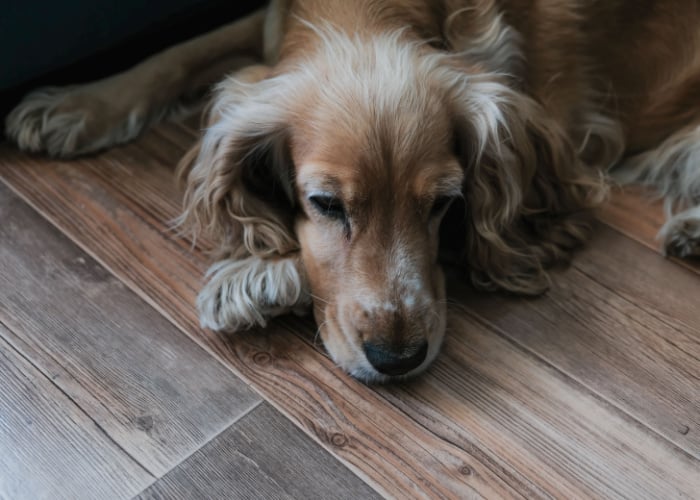
Yes, Mothballs are Toxic to Dogs…
Regardless of whether Fido inhaled or ingested it, these tiny, round pesticides can definitely cause mothball toxicity to your pet.
Dog owners like you shouldn’t take incidents of mothball poisoning lightly.
If you catch your dog eating mothballs, don’t waste a single second and call your local vet or the pet poison hotline for help.
Look out for the earliest signs of mothball poisoning and immediately take them to the vet clinic to receive immediate care.
Now, before you go…
If you are interested in what other substances may or may not harm your dog when ingested, then check out the links below!


